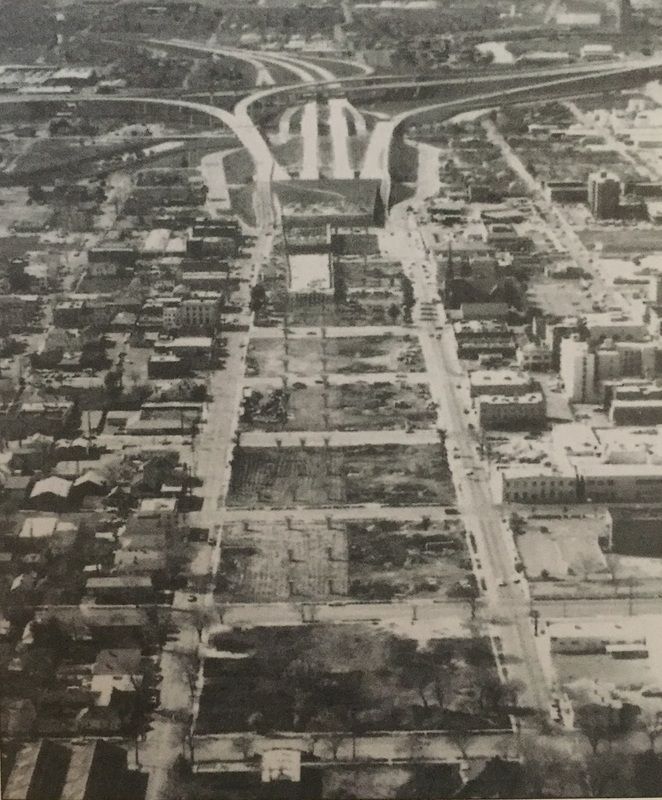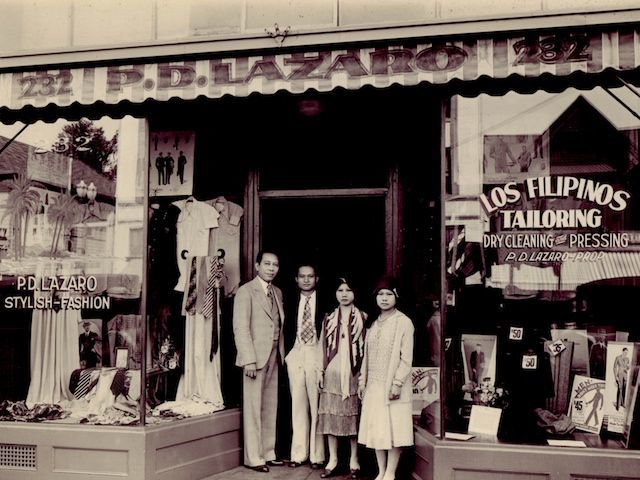Crosstown Freeway construction
The 1964 demolitions of blighted neighborhoods in Stockton targeted three areas: south and east Stockton, and nine blocks in downtown: the West End. The widespread push for “progress” aided in the creation of the West End Redevelopment Project in 1955 and authorized the Redevelopment Agency to force remaining building owners to sell what they considered condemned buildings waiting to be demolished. These efforts continued until 1962, when mandatory abandonment of buildings was required as the Redevelopment Agency began filing condemnation suits against property owners in the West End. The demolitions began as soon as all condemned buildings were fully evacuated and sold to the agency and left only three buildings standing: the Nippon Hospital, Sperry Flour Mill, and the Eureka Grain and Farmer’s Union. The demolition projects continued for two years, from 1964 to 1966 and disrupted the Filipino businesses in the West End very suddenly. Some businesses, like the Saldevar’s barbershop were able to relocate from the West End to El Dorado Street and move into the Stockton Pool Hall location in the heart of Little Manila. The loss of the West End to the redevelopment efforts ended just before the Little Manila community and served as a daily reminder that their neighborhood could be demolished as well.
The fight against the proposed path of the freeway through Little Manila was long fought by some of the largest Filipino American organizations including the Filipino Community of Stockton, Inc., and the Legionarios del Trabajo and other non-Filipino supporters such as representatives of Japanese and Chinese communities, other residents, and Charles M. Weber, grandson of Stockton founder Charles Weber, however their combined efforts could not overpower the decision to place the Washington-Lafayette corridor through Little Manila. By 1968, only two blocks of Little Manila remained after demolitions began splitting the Filipino community in two and leaving only a few key businesses such as the Lafayette Lunch Counter, some barbershops, grocery stores, and a few hotels. By the early 1970’s, businesses such as the Saldevar pool hall and barbershop received notifications of plans to demolish the building they had moved into less than five years after the redevelopment projects of the West End.
In the midst of redevelopment projects in Stockton, the founding of the Filipino Center in 1972 became the focal point of the Filipino community as the final businesses closed on the remaining blocks of Little Manila. Those born after 1960 have no memory of what Little Manila was like in its prime, with their cultural center moved to the Filipino Center, the younger generation experienced their own hardship during redevelopment projects during their life beginning in 1999 which replaced hotels, restaurants, and grocery stores with a fast-food restaurant and gas station. The memories of Little Manila are carried on through photos mostly as few of the original buildings remain after decades of redevelopment projects aimed towards the low-income communities of south and east Stockton. Redevelopment proposals continued into 2003 to demolish the last of Little Manila on Lafayette Street were protested by the Little Manila Foundation and at the time of publishing, a decision in the matter had not been made.



